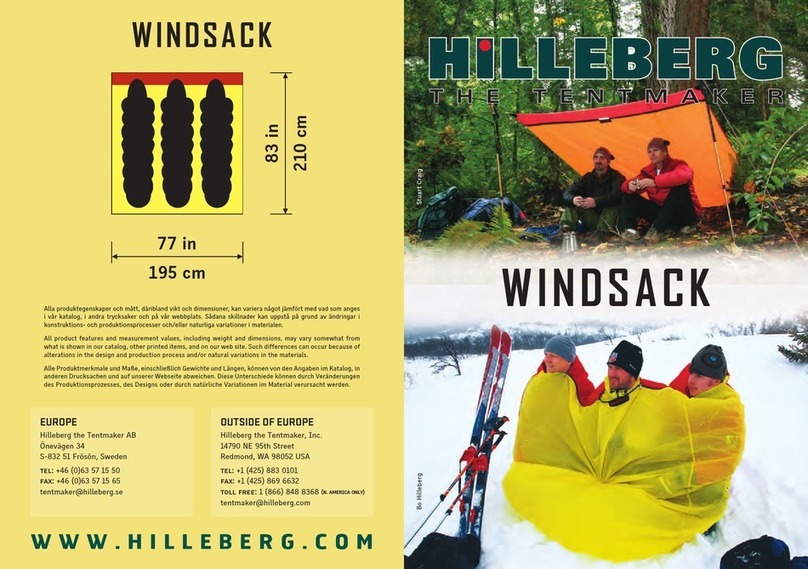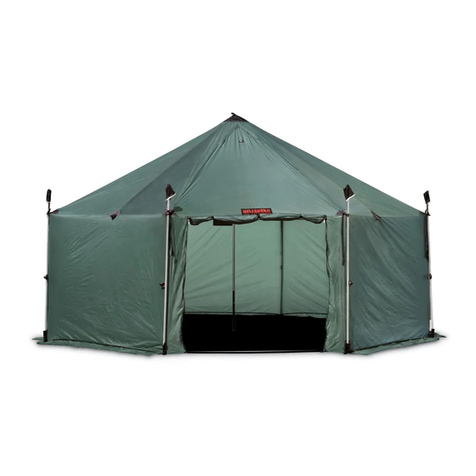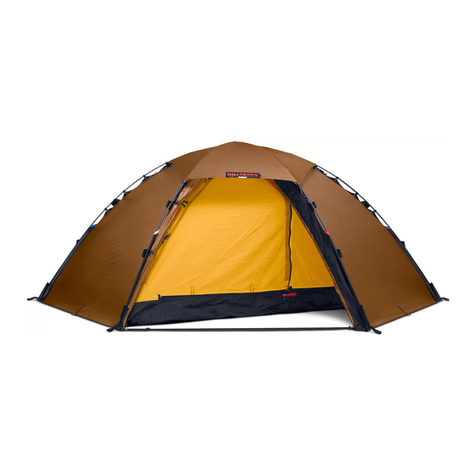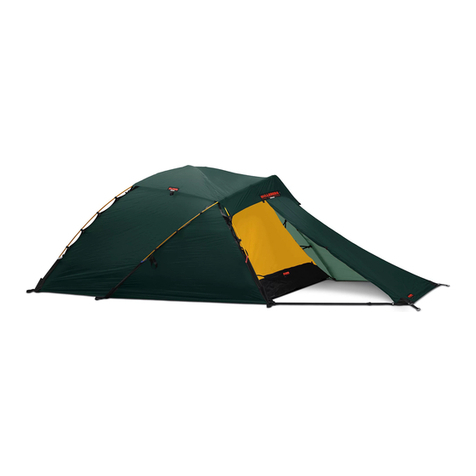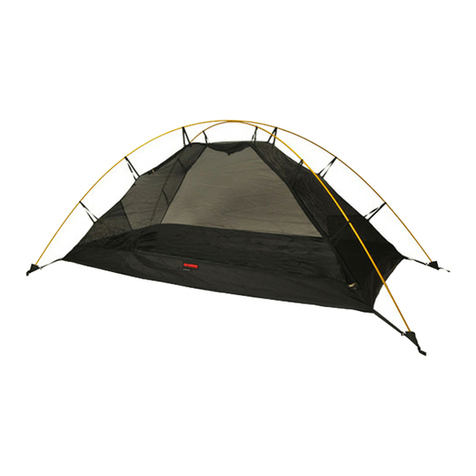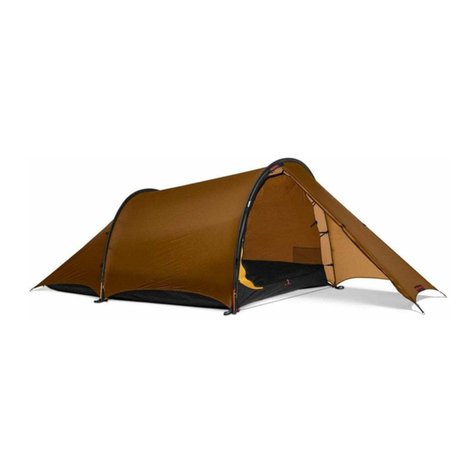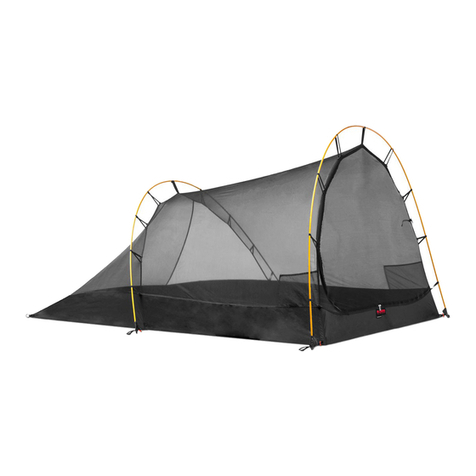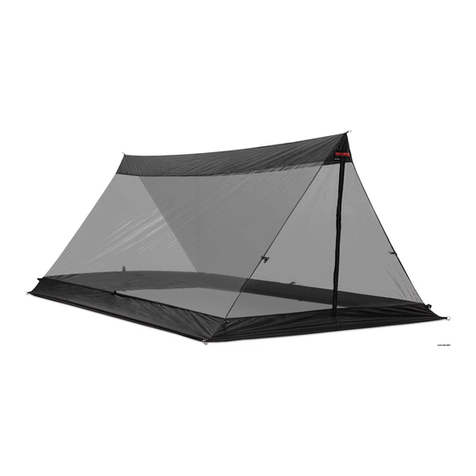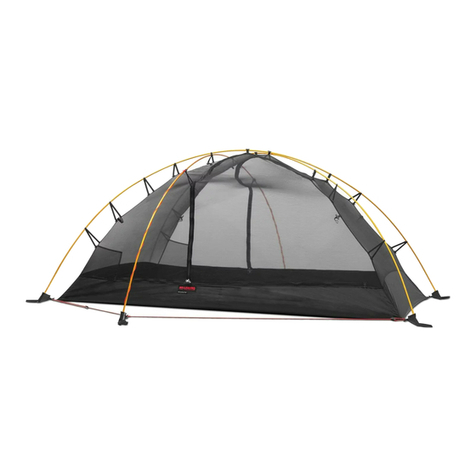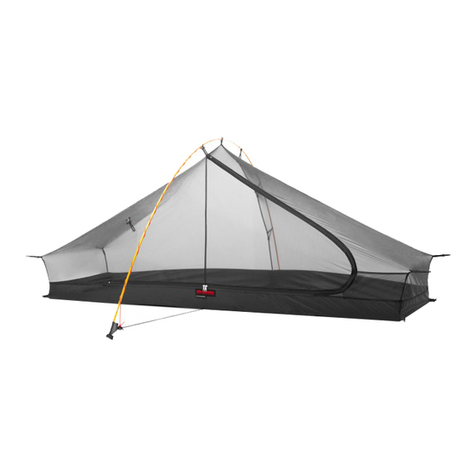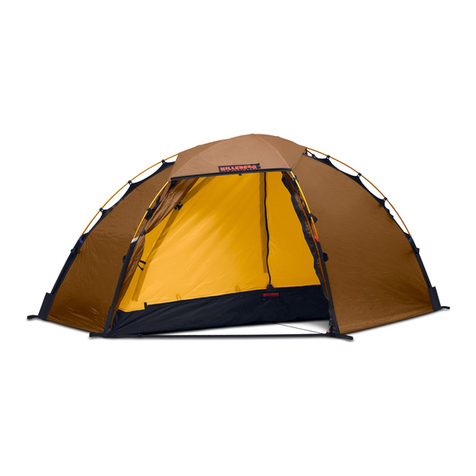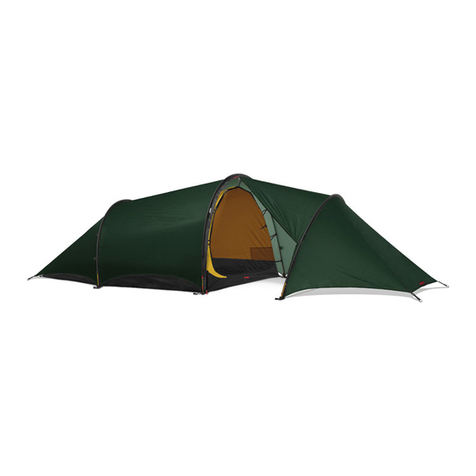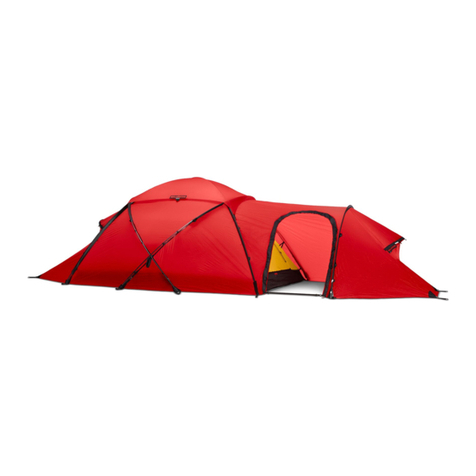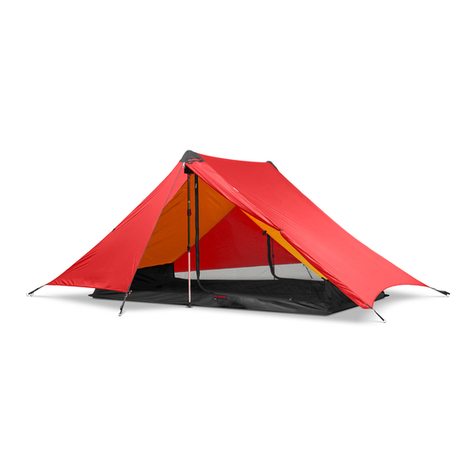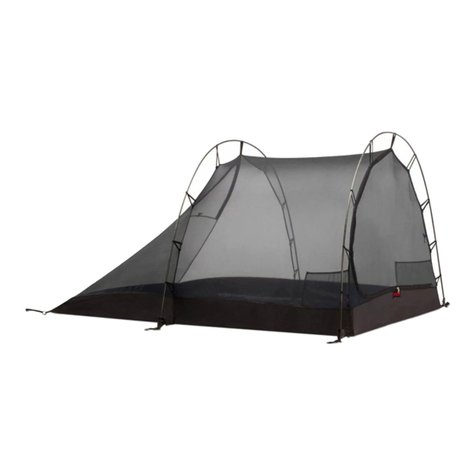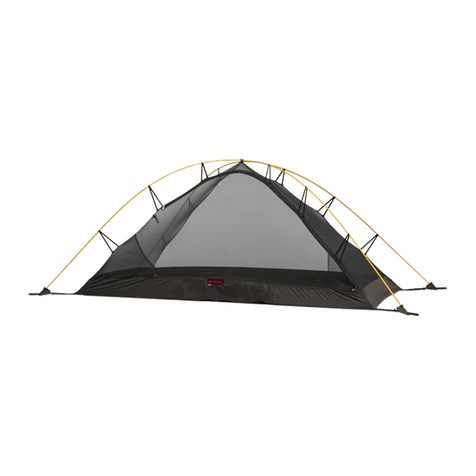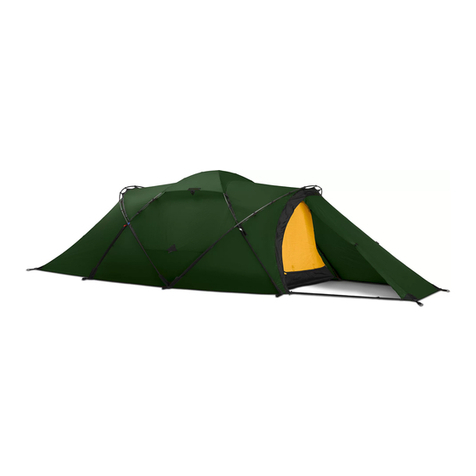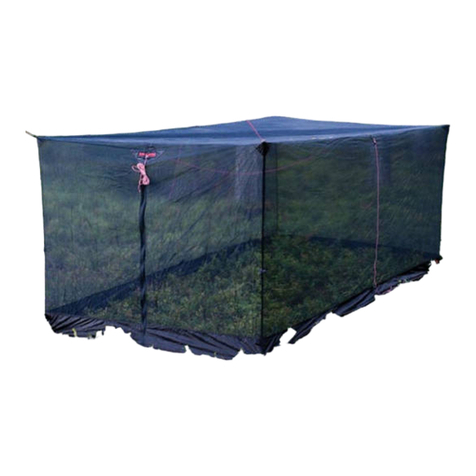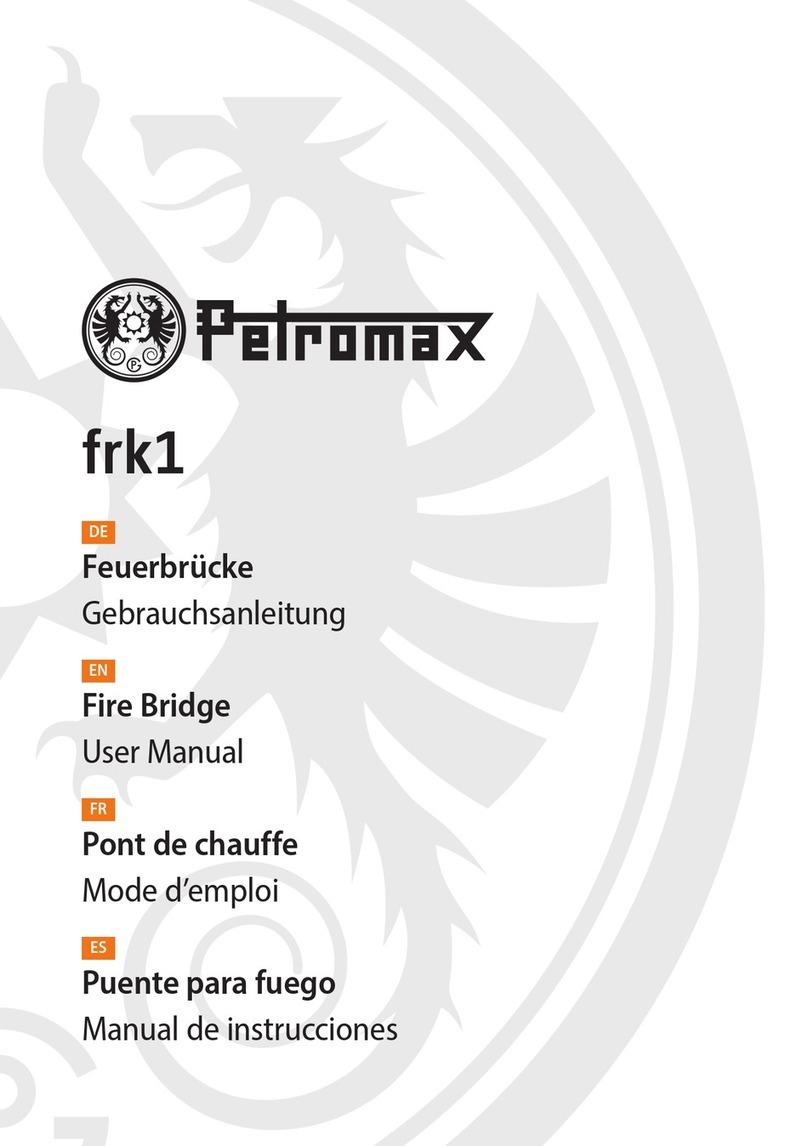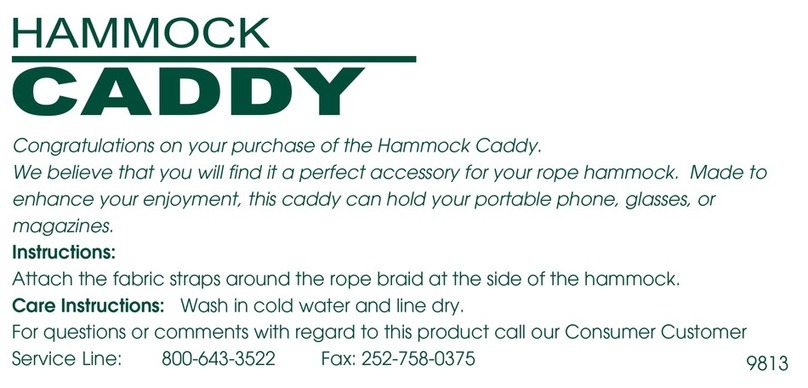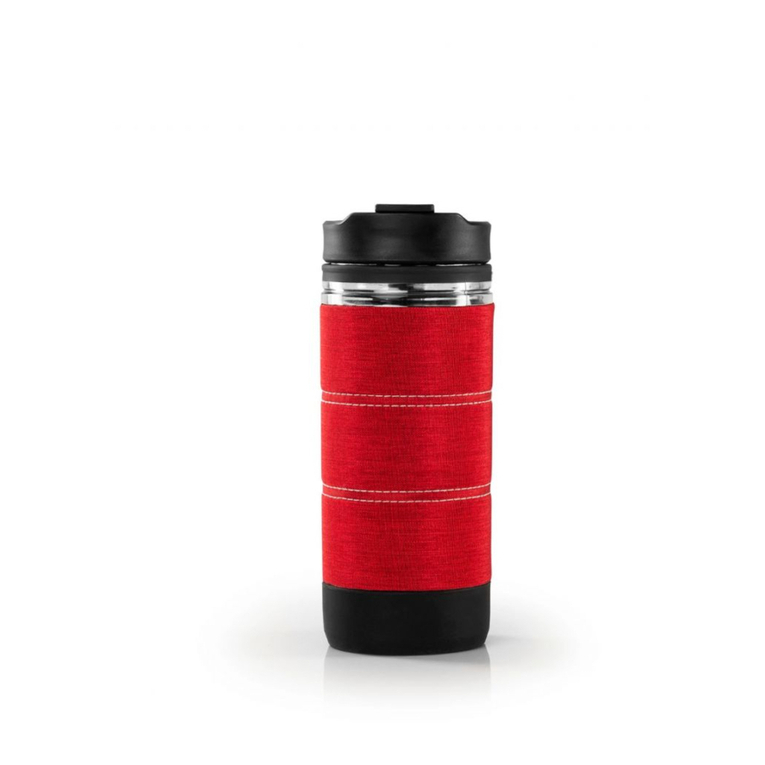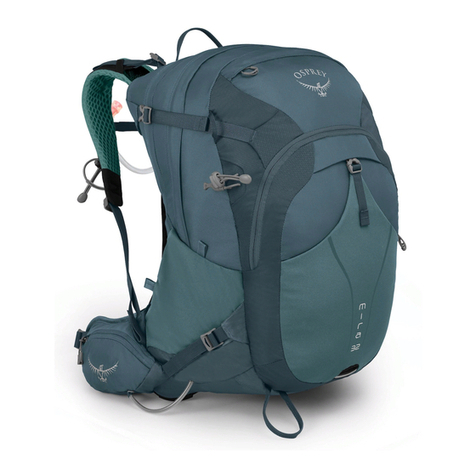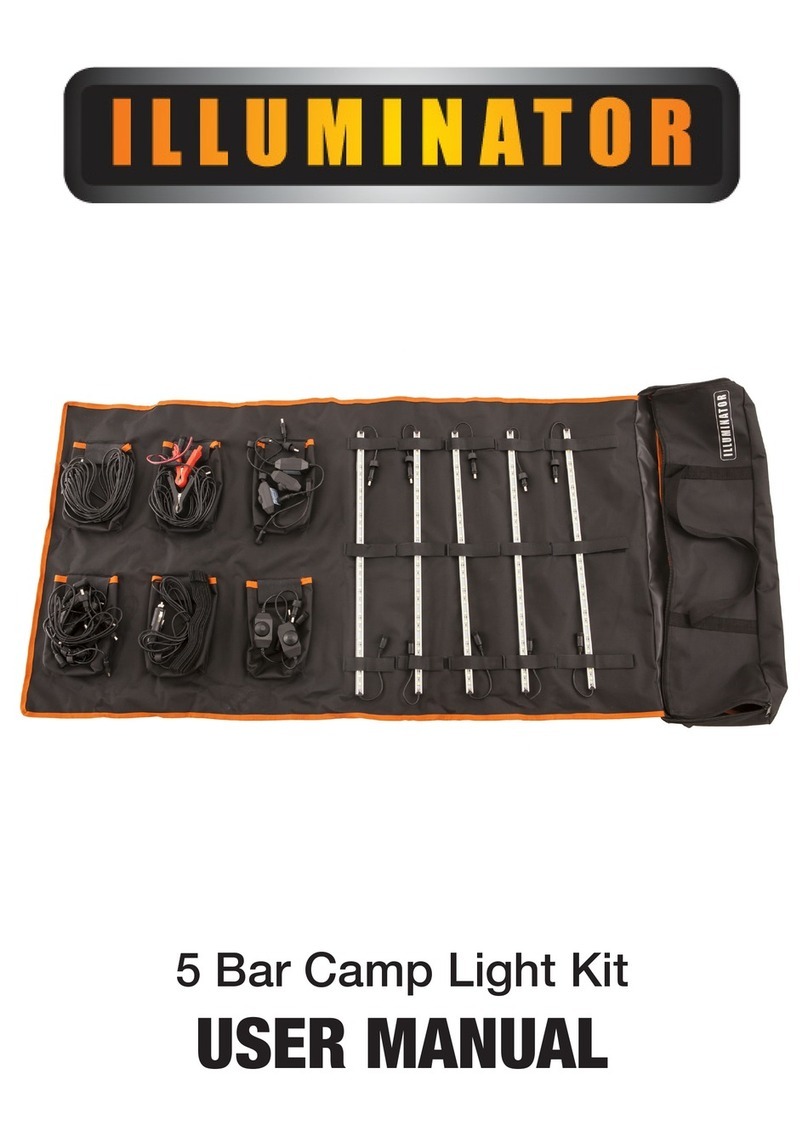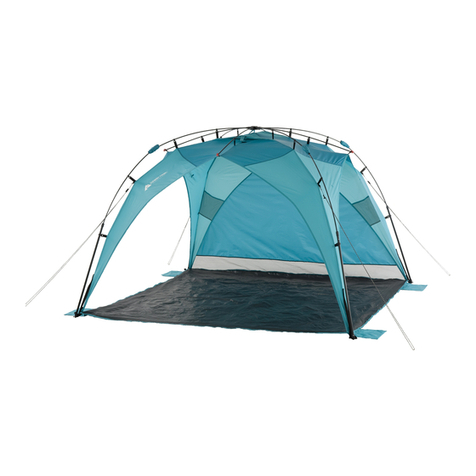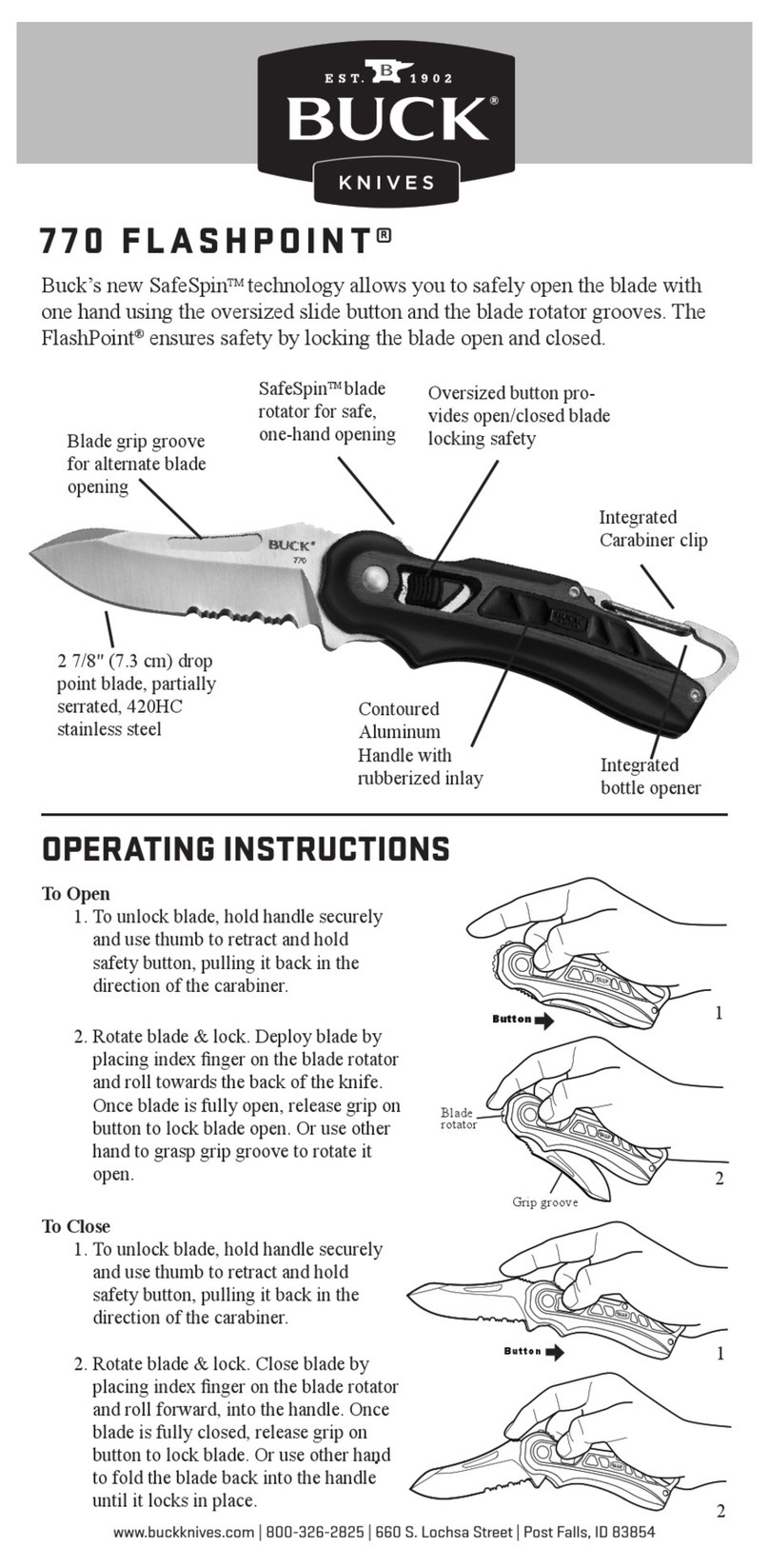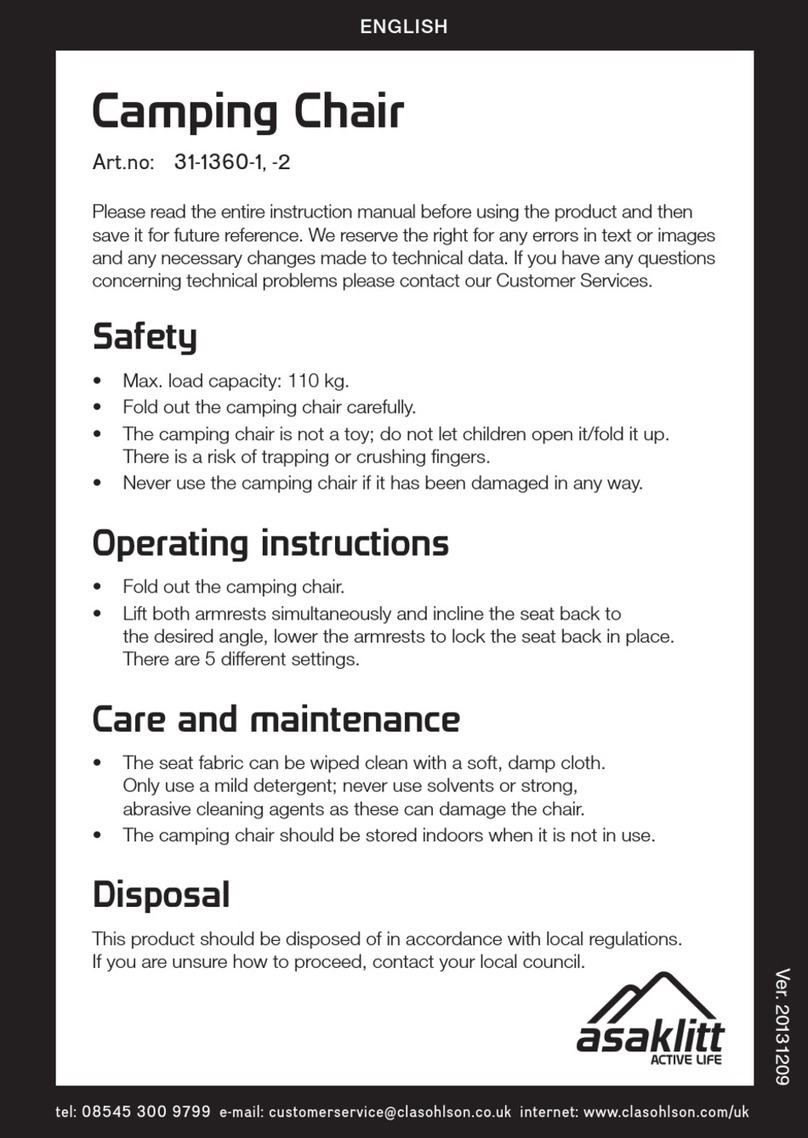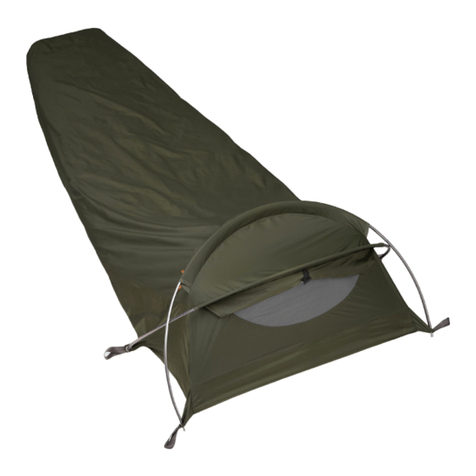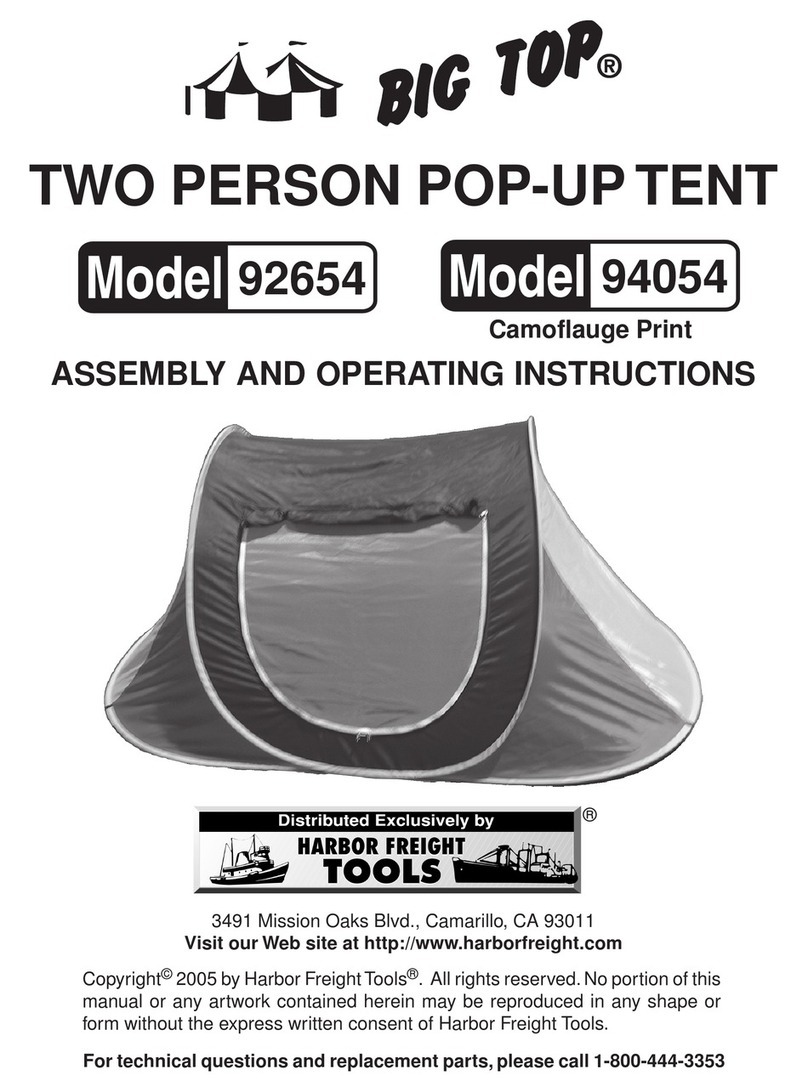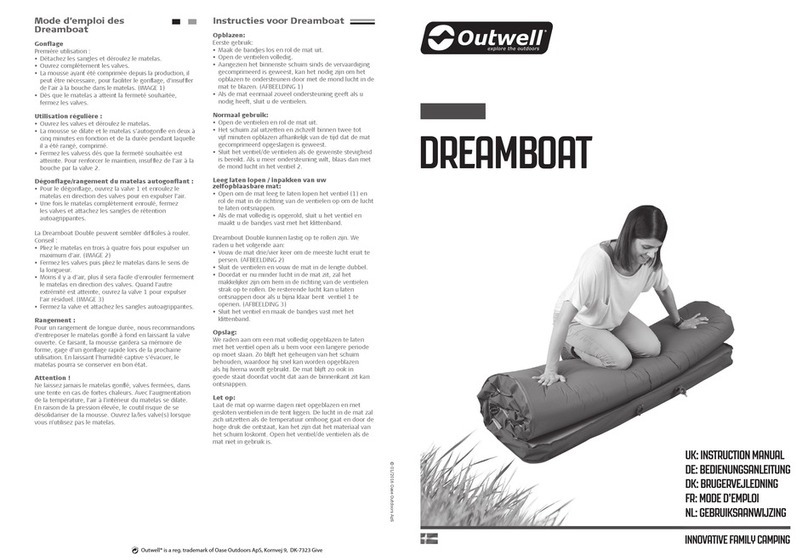
| 3
2 |
Hilleberg Saivo
sv sv
en en
de de
Willkommen zu Deinem neuen Hilleberg Saivo!
Du hast mit diesem Zelt ein hoch qualitatives Produkt erworben und solltest es
auch dementsprechend handhaben. Wir empfehlen Dir, diese Anleitung vor dem
ersten Aufbau Deines Zeltes gründlich durchzulesen und den Aufbau zu üben,
bevor Du mit Deinem neuen Zelt die erste Tour unternimmst.
Saivo ist ein innovatives, geräumiges, selbsttragendesZelt für härteste Bedingungen.
Die Instruktionen in diesem Heft sind für schlechtes Wetter gedacht. Wir emp-
fehlen, diesen Arbeitsgang einzustudieren und zu befolgen. Bei gutem Wetter ist
dieser Arbeitsgang nicht so bedeutend, es ist jedoch ratsam, sich Aufbau-Routinen
zu schaffen um für Wetterumstürze gerüstet zu sein.
Saivo Inhalt
Außenzelt aus Kerlon 1800 mit eingebautem Innenzelt. Vormontierte Abspann-
leinen (14 Stk.) mit Leinenspannern. Zeltstangen (10 mm): 4 x 393 cm. 24
Heringe. Packsäcke für Zelt, Gestänge und Heringe. 1 Extra-Stangensegment,
1 Reparaturhülse und 1 Aufbauanleitung.
achtung! Das Zelt besitzt 24 Ansatzpunkte für die Heringe. Das Zelt ist selbst-
tragend, die Apsiden benötigen nur 4 Heringe. Wir empfehlen trotzdem, dass Du
alle Heringe verwendest und den Gebrauch der Zeltleinen zur normalen Routine
machst, da das Wetter immer unberechenbar ist.
Välkommen till ditt nya Hilleberg Saivo!
Du har investerat i ett högkvalitetstält, så tag väl hand om det. Vi rekommenderar
att du läser instruktionshäftet noggrant innan du sätter upp ditt tält och att du
tränar ordentligt på att sätta upp och ta ner det innan du går ut på din första tur.
Saivo är ett innovativt, rymligt, stabilt och självstagande tält för de mest extrema
förhållanden. Instruktionerna i detta häfte utgår ifrån hantering av tältet i
dåligt väder och vi rekommenderar att du alltid följer denna arbetsgång. Vid
vackert väder är det inte nödvändigt att följa denna arbetsgång, men det är bra
att skapa rutiner för användning om vädret slår om.
Saivo innehåller följande
Yttertält i Kerlon 1800, hopkopplat med innertält. Monterade linor 14 st med
linsträckare. Tältstänger 10 mm, 4 x 393. Markpinnar 24 st. Packpåsar för tält,
stänger och pinnar. Extra stångdel 1 st. Reparationshylsa 1 st. Instruktionsbok.
obs: Det finns 24 fästpunkter för markpinnar. Tältet är självstagande och man kan
resa tältet med endast 4 markpinnar. Vi rekommenderar dock att du tar för vana
att alltid använda alla markpinnar och linor eftersom vädret kan växla.
Welcome to your new Hilleberg Saivo!
You have invested in a truly high-end, high quality tent, so take care of your invest-
ment. We strongly recommend that you read these instructions completely before
setting up your tent, and that you practice setting up your tent at home before
taking it on a backcountry trip.
The Saivo is an innovative, roomy self-supporting tent built for the most extreme
conditions. Please note that these instructions are based on pitching the tent in
severe weather, and we recommend that you practice this method so you are
comfortable with it. In less demanding conditions, following this method is not as
crucial, but it is good idea to create routines for use in case the weather changes.
What’s Included with the Saivo
One outer tent in Kerlon 1800 connected to one inner tent; 14 attached guy lines
with line runners; 10 mm poles, 4 x 393 cm; 24 pegs; stuff bags for tent, poles and
pegs; one spare pole section; one pole repair sleeve; and an instruction booklet.
note: There are 24 possible peg points on the Saivo. The tent itself is self-sup-
porting, and the vestibules require just four pegs. However, we recommend that
you carry and use the others, and that you make guy line use part of your normal
routine, since weather in the backcountry is always unpredictable!
